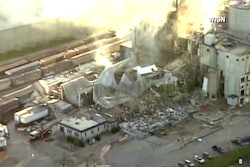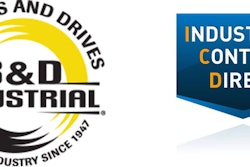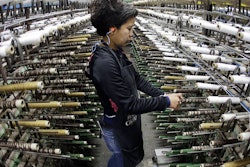Today’s highly competitive market has forced food and beverage manufacturers to look at all alternatives to reduce waste and control fill variation. Whereas overfill gives away product, underfill can result in litigation, fines or even worse — brand damage.
In any packaging process where a product is being filled into individual packages using a target or nominal weight label, there is a risk of improper filling. Underfilled packages violate the Fair Packaging and Labeling Act which requires manufacturers to disclose net contents of a package. The Federal Trade Commission may pay a visit, announced or sometimes unannounced, to conduct random sampling and ensure that manufacturers are properly filling packaging. The enforcement of the Fair Packaging and Labeling Act is designed to investigate and stop consumer deception, such as slack fill. Underfill can result in temporary discontinuation of a production line or facility, causing loss of productivity, rework or yield loss. It can also result in consumer complaints, harm to brand equity and diminished customer loyalty.
To avoid this risk, some manufacturers think it is safer to overfill, but this is just as bad. Overfilling results in unnecessary product “giveaway,” reduced revenue and lower margins. Consider a product with a one-pound nominally labeled weight per package, which holds a product worth $1.00 per pound, and is processed at a rate of 50,000 packages per week, 50 weeks per year. The savings generated by a simple one percent reduction in overfill could save 25,000 pounds annually, or $25,000 per year.
Minimizing fill variation not only reduces the amount of product that is given away, it also lowers material costs in packaging, storage and transportation. So how is it done?
Many companies have tried to tackle the problem of fill variation, but have faced the common challenge of insufficient historical data from the manufacturing lines. Without this data, it can be difficult to uncover the root causes of fill variation and effectively craft solutions. These six-steps, using Lean Six Sigma and statistical process capability analysis, have been proven to reduce fill variation and result in precision packaging fill, significant cost savings and reduced risk.
Step 1: Analyze Current Data
Analyzing current data from the manufacturing filling line is the first step to determining the amount of underfill or overfill that is taking place. Continuous data is required for fill analysis using statistical process control and process capability methods. This type of data is information that can be measured on a continuum or scale. The data is normally captured in the operating system governing the fill process. Typically, within that fill process there is a target or nominal weight. There are also tolerance limits: UCL, which represents the upper control limit, and LCL, which represents the lower control limit. This information is generally displayed graphically on a control chart (see Figure 1).
A control chart is a line graph that displays a continuous picture of what is happening in the production process over time. It is an important tool for statistical process control. The UCL and LCL on a control chart indicate whether the observed variation in the process is within tolerance and therefore acceptable, or whether the variation is caused by an abnormal event that must be investigated.
Step 2: Understand Legalities and Company Policies
Understanding legalities and company policies for the filling operation is crucial when tackling underfilling and overfilling. Most company policies are centered around the FTC requirements for filling and labeling a particular product. Most packaged food goods are pre-labeled with a nominal weight at the processor, and the regulatory requirements in most states come from the National Institute of Standards and Technology Handbook 133 (NIST HB133). Two aspects of FTC packaging requirements are relevant to overfill: the Maximum Allowable Variation (MAV) and the Average Error (AE).
The weight/volume of each individual package in an inspection lot cannot be below an absolute lower limit known as the Maximum Allowable Variation (MAV). NIST HB133 defines MAV as: “…a deficiency in the weight, or measure, of an individual package beyond which the deficiency is considered to be an unreasonable error." This requirement is designed to keep manufacturers from intentionally shorting customers’ product in order to cut costs or increase profits.
Average Error has to do with the overall distribution of weights/volumes in an entire sample lot or run. The AE requirement stipulates that the average of all sampled units cannot be lower than a predetermined amount below the nominal labeled weight. In other words, if an auditor pulled a random sample of a particular product off the shelf, then the average weight of all of those packages should not fall below the nominal weight on the label.
By understanding these legalities, food and beverage manufacturers can focus efforts on measuring MAV and AE to ensure they consistently comply with company policies and FTC regulations.
Step 3: Determine Fill Weight Targets
Manufacturers must achieve a precise balance when setting the optimal fill rate. As we mentioned earlier, consistent overfilling sacrifices profitability, while underfilling results in significant risks of non-compliance with regulations and related punitive actions. Effective root cause analysis, statistical process control and process capability methods can be used to determine optimal targets for product fill for a given process. Focused efforts to minimize fill variation will allow the target to be further optimized, resulting in less waste without increasing risk of non-compliance.
A commonly used statistical method for minimizing risk is to calculate the Z-score. The Z-score takes the current state data and estimates targets to reduce giveaway of product, and is known as the shifted target. This estimation process is completed with extensive customer input and collaboration to provide a realistic check on the statistical data. Even though the shifted target is based on actual data, it does require monitoring to ensure the desired results are achieved.
Step 4: Implement Control and Tracking Charts
It is important to post control charts in filling operations and have the operations group chart the process status as a short interval control on an hourly basis. Once the shifted targets have been determined by the customer, implementation of these targets is communicated and tracked on the production floor by means of a tracking chart. A tracking chart is a visual management tool designed to chronologically track the overfill status for each filling machine. This helps to monitor machine performance with respect to hourly fill weights.
The tracking chart is constructed by identifying the y-axis as overfill amount and the x-axis as time (see Figure 2). The tracking chart is divided into three zones depicted by the colors green, yellow and red, from bottom to top respectively. The green zone ranges from zero overfill (LCL) to the green zone upper control limit (UCL). The green zone upper control limit is the desired overfill shifted target, as determined earlier, to allow a percentage of samples below label claim.
The tracking chart helps the operations team identify, in real-time, the adjustments required to optimize fill rates. Manufacturers should carefully consider how changes in formulation may impact their operations prior to pursuing this strategy.
The yellow zone ranges from the green zone upper control limit to the yellow zone upper limit (UCL). The yellow zone is the amount of overfill allowed above the overfill target and should result in actions by the operator to bring fill rates back into the green zone.
The red zone ranges from the yellow control upper limit to the red zone upper limit. The red zone is the amount of overfill not allowed and must trigger immediate action by the operator to bring fill rates back into the green or yellow zone. Additionally, there is a red zone that is below the label claim and requires machine adjustment to increase the fill weight into the green zone.
The tracking chart helps the operations team identify, in real-time, the adjustments required to optimize fill rates.
Step 5: Install Shift and Monthly Meetings
It is important that companies establish meetings to evaluate report data and identify action items as a team. By establishing regular meetings by shift, and again on a monthly basis, it is possible to review control and tracking charts, understand variances and set goals. Shift reviews are used to determine common and special causes of any outliers in the process. Based on this information, the team can determine what actions need to take place to minimize variation in the process. All organizations’ management operating systems contain feedback and control loops to promote continuous improvement of processes as illustrated by the prior tracking chart. The current shift tracking results are aggregated and discussed in the pre-shift meetings, highlighting assignable causes for data points in the red zones if known. If each shift is managed properly with respect to overfills, then the sum of the shifts will result in favorable weekly, monthly and yearly performance. The valued outcome from this frequent meeting is to identify causes and assign actions to prevent recurrence of the red zone data points. Succinct identification of the causes within the organization’s problem-solving framework will aid ultimate overfill control. Monthly meetings are held to track overfill results to ensure progress is occurring over time.
Step 6: Review Results and Current Targets
The final step of the process involves conducting a regular review of the fill weight targets every six months to determine if set targets are still valid and if any further adjustments are required. A periodic management review meeting is held to illustrate overfill trend, projected annual savings and determine future overfill targets based on the data from the period. Highlights of this meeting are the actions to prevent recurrence and their results on overfill actuals. This places the importance on identification of improvement directives and not solely on the projected annual savings. Perpetuation of the assignable cause activity, identification of deviations and a process to find causes and actions to prevent recurrence are crucial to the continuous improvement process and require significant visibility.
A baby formula manufacturer we worked with used this methodology to achieve sizable savings. Under intense regulatory burden, baby formula manufacturers have little margin for error when it comes to a discrepancy in any part of the manufacturing process. Rather than risk underfilling, one manufacturer was conservative and was overfilling packaging to avoid risk of potential complaints or litigation. However, in the midst of rising food prices, the manufacturer had to look for ways to reduce costs and streamline processes.
After following this process, in under four weeks, the manufacturer realized over $24,000 in savings to the bottom line. Over the following year, the company saved more than $250,000 in baby formula waste due to overfill. This demonstrates that a tiny shift in fill weights can equate to substantial savings — without any capital investment. Proper analysis of the data, identifying the causes of variation in the process and developing the right actions to minimize this variation will result in reducing overfill and thereby improve productivity.
Controlling packing weight/volume allows companies to reduce and control variation of products, thereby decreasing costs and increasing overall profits. By incorporating processes such as tracking charts on the manufacturing plant floor, all levels of the organization have the ability to see the process capability of the filling operation. Continually resolving issues with the outliers in the process ultimately results in a significant productivity improvement for most companies. Companies are able to use previously wasted materials to package more product, giving them a competitive advantage in their respective markets.
About the Authors
Bruce Everett, Curtis Gavin and Lily Ho are consultants with Myrtle Consulting Group, an operations consulting firm serving leading companies in the food and beverage, consumer packaged goods and life sciences industries. For more information, visit https://www.myrtlegroup.com






















